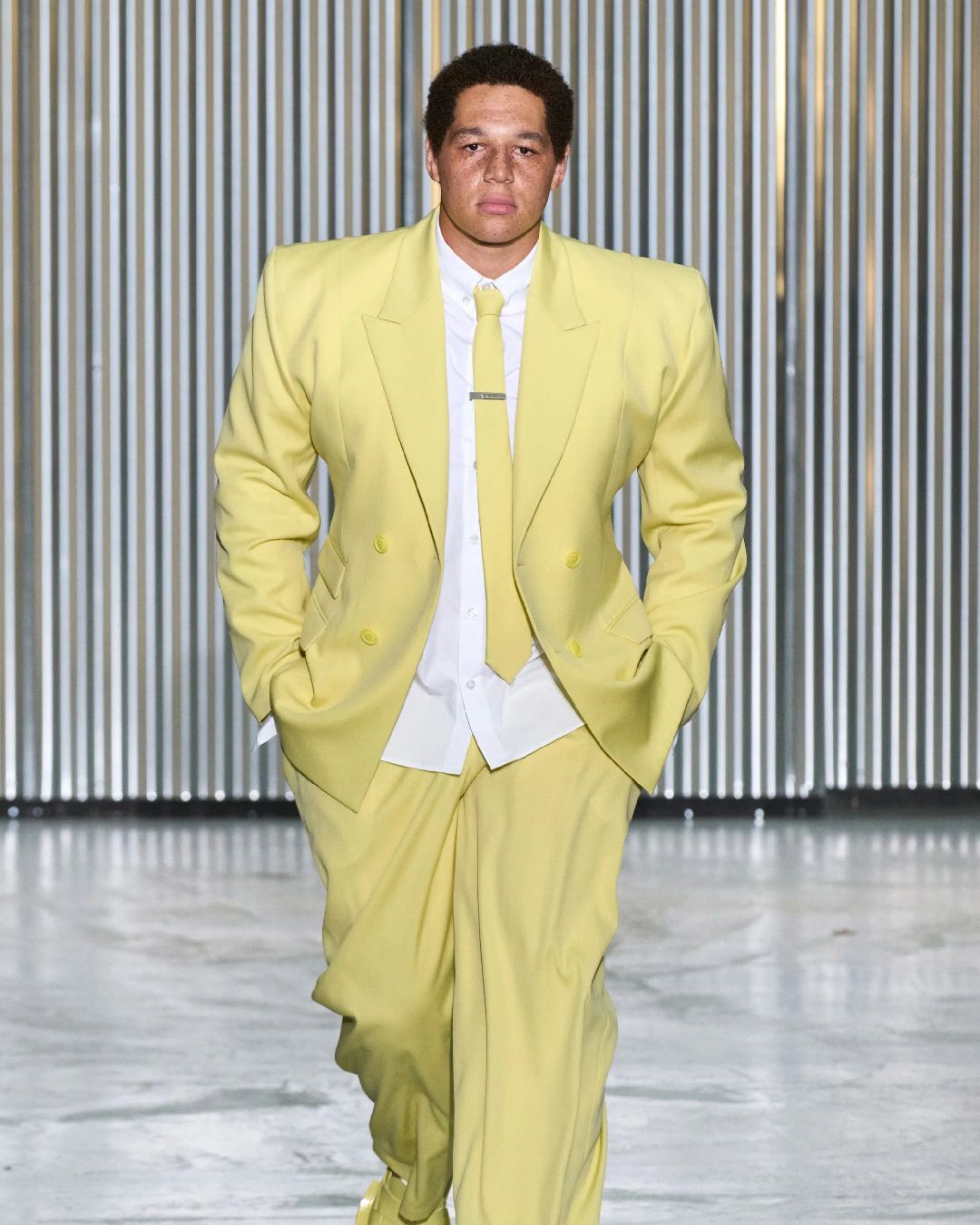
Whatever happened to plus-size models? A failing trend for women, which for men seems to have never even started
A greater representation of different bodies and faces in fashion took the women's catwalks by storm years ago, but left the men's ones aside. The world fell in love with Ashley Graham, Paloma Elsesser and Jill Kortleve in no time at all, nodding at every phrase used by the international press introducing them, between an interview and a cover story, as strong, sensual, and daring, the new herald bearers of the entirety of the industry, finally succeeding in leading fashion towards change, meanwhile becoming supermodels in their own right. But nowadays it feels as though we are back to square one. Where is all this inclusiveness among men? At the conclusion of the Men's Fashion Week of the last few days, a report by Vogue Business shed light on a peculiar situation in the - already strange - world of fashion modeling, going so far as to demonstrate a real regression in the field of plus-size representation.
According to the Size Inclusivity Report of these last Fashion Weeks, of no less than seventy-two shows, only six presentations at SS24 employed plus-size models, compared to eight out of sixty-nine the previous year. Of the 3,044 looks that paraded during the Men's Fashion Week SS24, only 0.4% were worn by oversize models, while for the female counterpart, during the Women's Fashion Week AW24, the figure was 0.6%. Still very little, but a considerable difference. Milan was the most rigorous city in terms of casting; according to Vogue Business, Charles Jeffrey Loverboy's show - a London-born brand by Scottish designers - was the only one to include different bodies on the catwalk, despite Dsquared2 and Magliano having a couple of men defined as mid-size in their respective line-ups. Strangely enough, Paris was more favorably disposed toward plus-size models: KidSuper was the show with the most plus-size representation ever, with a total of 5.7% beating Louis-Gabriel Nouchi's 5.3%. Even at Louis Vuitton, on the occasion of Pharrell's debut as the fashion house's new artistic director, distinct bodies, heights, and shapes appeared, raising the show's highly celebratory spirit through the choice of casting.
Percentages and comparisons aside, a greater representation of different male bodies on the catwalk today increasingly affects a brand's reputation, even if they do not seem to have realized it yet. The first reason for this is the fact that it is still a niche market, which few in the luxury world have decided to delve into; the second is a figure, perhaps the most effective way to make even the best-known names in the fashion industry recognize its relevance. $696,712.1 million by 2030: this is the value that the plus-size clothing market will reach according to Custom Market Insights' forecasts updated in May this year. Clearly, using revenue alone to measure the value of an industry that is more open to diversity and inclusion would direct the entire movement towards a performative tactic, solely aimed at improving the economic status of a brand. But you have to start somewhere, to be heard. As James Corbin himself, one of the leading figures among the new generation of plus-size models, explains, «It's a door that's opening, but it needs to be kicked open.»















































